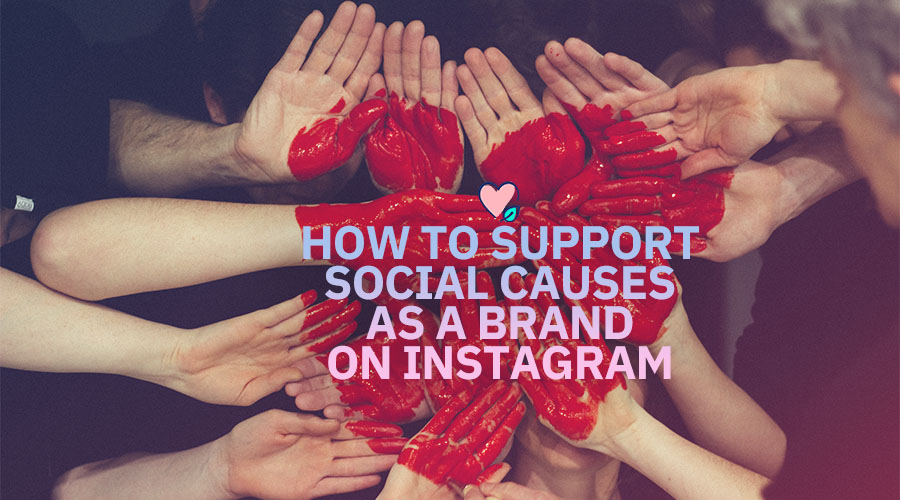Society today is changing at unprecedented levels. Now more than ever, people expect their favorite brands to make a stance or at least show some awareness of causes that resonate with them. Apathy or neutrality is no longer sufficient.
Saying the wrong things or simply carrying on business in the middle of brewing social controversies may be seen as tone-deaf, insensitive or worse, taking the side of the oppressor.
Any of these can degenerate into a scandalous, negative backlash that could drastically impact short-term sales and your brand's long-term sustainability within a certain demographic.

Modern companies now have to develop strategies and earmark a budget for social causes that resonate with the industry they operate.
Some companies may target issues with a high impact on the demographics that dominate their patronage.
Well, buyers expect the sellers they support to have a clear stance on social calls. Brands, essentially, have to speak up and be seen to do so.
A recent example of this was America’s biggest corporations distancing themselves from Donald Trump and some of his irate supporters on the back of the Capitol Building attacks.
Why Your Brand Should Support a Social Cause
1. Increased Patronage

Beyond product specifications and quality, purchasing decisions today are influenced by lots of cumulative factors. Consumers want to see how brands give back to society, and how they support causes that have a large impact on their daily lives.
For instance, a brand that supports the #BlackLivesMatter movement is likely to get more patronage from the colored and minority populations—even if their product or service isn't the best.
2. Wider Reach
Oftentimes, these social causes are widely discussed globally. If done right, lending your voice to a cause can lead to great publicity.
Again, if you do it right, lots of people who have never heard of your brand before may suddenly take note of what you do.
3. Make a Difference

As a brand CEO, it also provides ample opportunity for you to make a real difference in a movement that you have passion for. Your brand can finally make a major difference in the community.
4. Brand Values & Identity
By responding to social issues, you get to build a distinct brand identity and enshrine your values into the minds of both employees and customers.
Despite the potential benefits of aligning your brand with the right social causes, there are still plenty of pitfalls to be wary of.
Rushing to support a cause without doing your homework may put you at risk of appearing inauthentic, which is a risky PR move for any brand.
The ability of social media to disseminate information in real-time is second to none. This means that platforms like Instagram are central to a business show of support for such causes.
Now, we’ll be discussing how to back a social cause up, in a meaningful and impactful way.
How to Support Social Causes as a Brand on Instagram
Step #1: Plan Campaigns in Advance

Some social causes have been around for so long that they have become a part of the calendar. Such causes may have dates or months dedicated to commemorate them.
If you've chosen to support such a social call, the first step is to plan a themed campaign in advance. This helps to ensure that your efforts are extensive and impactful.
Step #2: Use Appropriate Stickers and Hashtags
Hashtags and stickers are essential elements that you can deploy for effective participation on the Gram.
Strategic use of hashtags enables you to join the conversation and simultaneously ensure that your voice is placed on the radar of millions of people who are following the topic.
Step #3: Use the Right Visuals

A picture, they say, is worth a thousand words. When you support an ongoing cause, ensure that you carefully scrutinize pictures that you post to drive home your message.
Check the background of the picture or video to be sure there is nothing inappropriate. You also want to make sure the visual captures the essence of your underlying message.
Step #4: Give Photo/Video Credits
Sometimes social causes come around with a bit of turmoil, unrest, and protests. It becomes quite difficult for your brand to be physically present to capture the incident or participate.
At times like this, your only way of showing support is to amplify the messages and images of what's going on.
When you do this, ensure that you give credits to the original publishers of any content that isn't yours.
Step #5: Don't Attempt to Profiteer

Always remember that a social cause often affects the lives and livelihood of one or more individuals. It's not an avenue for your company to make profits from it.
Despite the temptation of profit, it's unethical and can lead to a serious backlash in the long haul.
Step #6: Be Consistent
While there's no limit to the number of social causes that a brand can lend its voice to, it's important to be strategic and consistent in your policy. Don't support two polarizing causes.
When two causes have opposite fundamental ideas, it defeats the purpose of both campaigns and exposes your brand as ingenious and pretentious. (Don't forget: No matter how long, the internet never forgets.)
Conclusion
It's important to make social efforts with the right intentions.
Despite the fact that there are benefits your brand can gain from supporting a social cause publicly, you should always strive for meaningful change and not merely PR coverage.
Alas, talk is cheap!
Ensure that it doesn't end with a quick post for the Gram. Endeavor to make impactful change in your immediate environment. That’s where the real win is.
